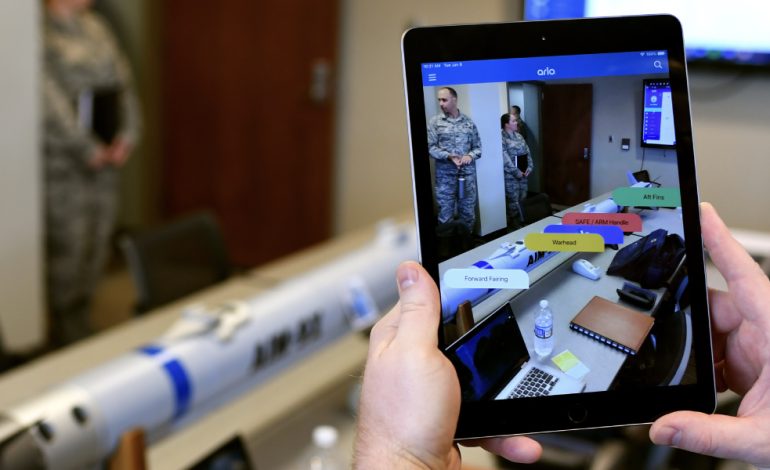How Augmented Reality Games are Bridging the Gap?

For a good reason, augmented reality games bridging have been gaining popularity in recent years. Augmented reality games bridge the gap between virtual and physical reality by combining the real world with virtual elements. Not only do these games create a truly immersive experience, but they also encourage active engagement and exploration. In this blog post, we will explore how augmented reality games bridging are helping to bridge the gap between the virtual and physical worlds.
What is Augmented Reality?
Augmented Reality (AR) is a technology that overlays digital content and information onto the real-world environment. This technology has been around since the 1990s, but it has only recently become more accessible through smartphones and other devices. AR games allow players to interact with 3D objects and characters in their physical environment. They can be used for entertainment, education, or both.
When playing an AR game, the user’s device detects markers in the physical environment. These markers can be anything from QR codes to logos or unique patterns. Once detected, the game generates a 3D object or character in the real world. The player can then interact with this virtual object or surface, moving it around or manipulating it. This interactive experience immerses players in their gaming environment like never before.
The use of augmented reality in gaming is increasing. It is being used to create new experiences that cannot be replicated in traditional consoles or computer games. AR games bridge the gap between the virtual world and the real world, allowing players to interact with objects and characters in ways that were not previously possible.
The Benefits of AR Games

Augmented reality (AR) games are becoming increasingly popular, allowing people to explore virtual worlds in real time. AR games bridge the gap between traditional video games and real life, providing players with an engaging, immersive experience. The technology allows players to interact with their environment and engage in interactive gameplay that blurs the lines between the physical and virtual worlds. There are numerous benefits associated with AR gaming, making it an attractive option for those looking for an enhanced gaming experience.
One of the most notable benefits of AR gaming is that it provides an unparalleled level of realism. This is because the game is played in the actual environment, creating a much more engaging experience than traditional video games. Players can interact with objects and other characters in their environment as if they were in space. AR games also tend to be more physically active than traditional video games, as players must move around to progress.
In addition, AR games provide a more social experience than many traditional video games. As players move around in their environment, they are likely to come across other players who are also playing the game. This creates a unique opportunity to interact and form relationships with fellow players, which is challenging when playing alone on a console or PC.
Lastly, AR games can also be used for education and development. The immersive nature of these games makes them particularly useful for teaching new skills or concepts. For example, by playing an AR game set in a medical environment, students can learn about anatomy and physiology in a fun and interactive way.
Overall, augmented reality games bridging provide players with a unique and immersive experience that traditional video games cannot match. With realistic graphics and engaging gameplay, these games offer something for everyone.
The Disadvantages of AR Games
Although augmented reality games bridging can be incredibly immersive and entertaining, there are some drawbacks to consider. One of the significant disadvantages of AR games is the cost. The hardware required for these types of games is expensive, depending on the type and sophistication of the game. Additionally, specific software and accessories may also add to the cost.
Another potential issue is privacy concerns. Since these games utilize real-world environments, players must be aware that others may observe their actions in the area. Additionally, GPS technology is used to track players’ locations, which can be concerning for people who want to remain anonymous.
Some players also report feeling dizzy or disoriented after playing AR games for long periods. This is because the games often require players to move around to take advantage of different features. As a result, some people may find the experience uncomfortable or unpleasant.
Finally, there have been reports of bugs and glitches that can disrupt gameplay. While developers are working hard to eliminate these issues, they can still occasionally cause players frustration.
Are AR Games Here to Stay?

Augmented Reality (AR) games are becoming increasingly popular, with an estimated 35 million people playing in 2018. They provide an exciting way to engage and interact with the world around us. But the question remains: Are AR games here to stay?
The answer is most likely yes. AR games are slowly gaining traction, and their popularity is increasing. Additionally, they have the potential to become even more immersive and engaging in the future as technology advances. Companies such as Apple and Google have already begun investing in the technology, which shows confidence in AR games’ longevity.
That being said, some hurdles still need to be overcome before AR games can truly take off. AR technology is still relatively new and has not been perfected yet. Additionally, the hardware and software for AR games can be expensive, which limits their reach to those who can afford them.
Despite these issues, AR games will likely remain part of our lives for years to come. As technology continues to advance and more people gain access to the hardware and software needed to play them, the popularity of AR games will likely only continue to grow. It’s a technology that promises a lot of exciting possibilities for the future, and it’s here to stay.
Most Frequently Ask Question
1. How do augmented reality games work?
Augmented reality games bridging combine computer-generated imagery and the user’s existing environment. The game uses sensors, such as a camera or GPS, to detect the user’s position and then generates images which appear to be part of the real world. This can include 3D objects, animations, sound effects, or other visuals overlaying the user’s surroundings.
2. Is there a difference between augmented reality and virtual reality?
Yes, there is a difference between augmented reality (AR) and virtual reality (VR). Augmented reality takes the user’s existing environment and adds computer-generated elements, while virtual reality immerses the user in a computer-generated world. AR games are more focused on interaction with the user’s current environment than VR games.
3. What are some popular augmented reality games?
Popular augmented reality games bridging include Pokemon Go, Ingress Prime, Harry Potter: Wizards Unite, Jurassic World Alive, The Walking Dead: Our World, and Arise. These games offer unique experiences and utilize different technologies to create an immersive experience for the user.
Conclusion
Augmented reality games bridging have come a long way since their beginnings, and they are now a common form of entertainment that can be experienced on mobile devices and gaming consoles. Despite the advantages and disadvantages associated with AR games, it is clear that this type of technology is here to stay. AR games provide hours of fun for people of all ages and offer a unique opportunity to bridge the gap between the physical and digital worlds. AR games have the potential to become even more immersive and advanced in the future, offering even more possibilities for users to explore.





